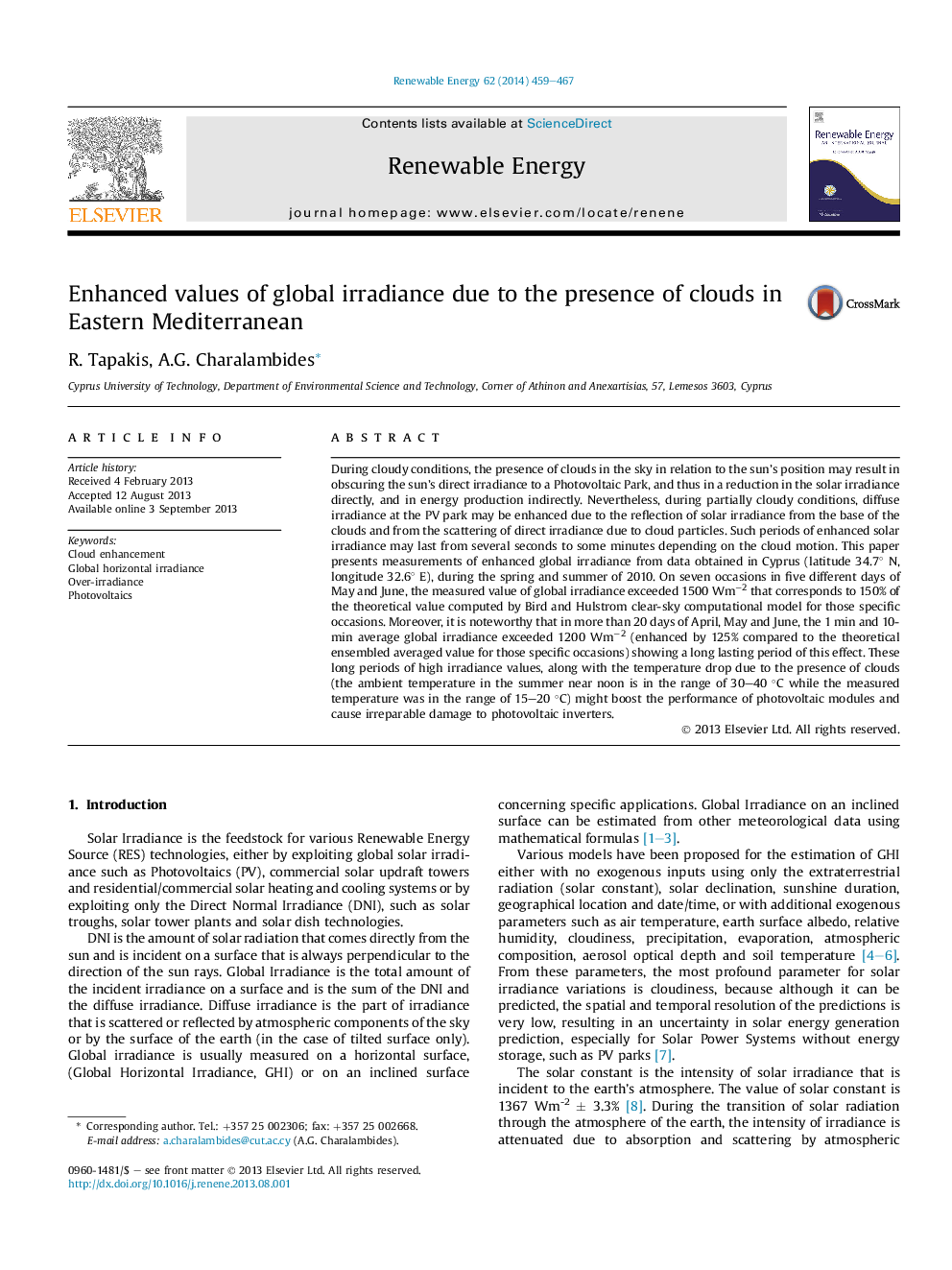| Article ID | Journal | Published Year | Pages | File Type |
|---|---|---|---|---|
| 6769142 | Renewable Energy | 2014 | 9 Pages |
Abstract
During cloudy conditions, the presence of clouds in the sky in relation to the sun's position may result in obscuring the sun's direct irradiance to a Photovoltaic Park, and thus in a reduction in the solar irradiance directly, and in energy production indirectly. Nevertheless, during partially cloudy conditions, diffuse irradiance at the PV park may be enhanced due to the reflection of solar irradiance from the base of the clouds and from the scattering of direct irradiance due to cloud particles. Such periods of enhanced solar irradiance may last from several seconds to some minutes depending on the cloud motion. This paper presents measurements of enhanced global irradiance from data obtained in Cyprus (latitude 34.7° N, longitude 32.6° E), during the spring and summer of 2010. On seven occasions in five different days of May and June, the measured value of global irradiance exceeded 1500 Wmâ2 that corresponds to 150% of the theoretical value computed by Bird and Hulstrom clear-sky computational model for those specific occasions. Moreover, it is noteworthy that in more than 20 days of April, May and June, the 1 min and 10-min average global irradiance exceeded 1200 Wmâ2 (enhanced by 125% compared to the theoretical ensembled averaged value for those specific occasions) showing a long lasting period of this effect. These long periods of high irradiance values, along with the temperature drop due to the presence of clouds (the ambient temperature in the summer near noon is in the range of 30-40 °C while the measured temperature was in the range of 15-20 °C) might boost the performance of photovoltaic modules and cause irreparable damage to photovoltaic inverters.
Related Topics
Physical Sciences and Engineering
Energy
Renewable Energy, Sustainability and the Environment
Authors
R. Tapakis, A.G. Charalambides,
